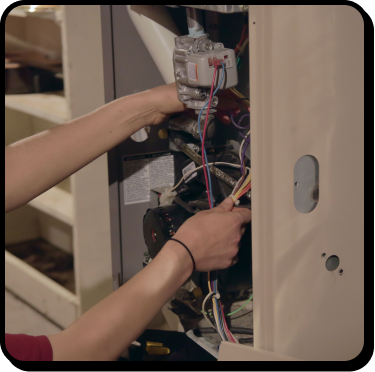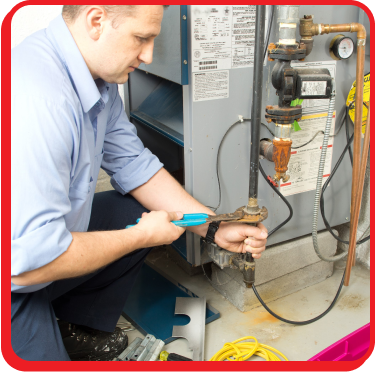Need furnace repair in Highlands Ranch, CO? Fox Heating, Cooling & Plumbing handles both routine issues and less common problems. Most homes in the area have newer systems, but that doesn’t rule out issues like ignition lockouts, blower motor failures, or sensor errors that can bring your unit to a stop without warning. These problems tend to surface during colder weather, when demand is high. Delayed furnace service can lead to more expensive issues, so our technicians work quickly to restore your heating. With our help, you’ll have nothing to worry about when temperatures drop.
Furnace Repair in Highlands Ranch, CO
Any Repair over $300

Dependable Furnace Repair in Highlands Ranch
Furnaces tend to show signs of early issues before entirely breaking down. The system might still respond to the thermostat and push out warm air, but it takes longer to get there or cycles more often than it should. Most people notice the change but hold off on calling for assistance, especially if the house stays warm enough. But putting service off usually means more strain on internal components and more expensive repairs down the line.
Furnaces are under heavier load for much of the winter. When something’s out of sync, that extra runtime makes the issue worse. A small delay in ignition or airflow can push the furnace into safety shutdowns or cause it to short cycle. If a sensor starts sending inconsistent readings, it might shut the system down in the middle of the night — even if it seemed fine earlier in the day.
These types of problems aren’t always visible without testing. A technician needs to see how the furnace behaves in real time, including how fast it starts, whether the flame holds and how the blower performs mid-cycle. This helps identify the problem quickly and avoid unnecessary part replacement.
- Cold or lukewarm air coming from vents
- Unusual delays between startup and warm air delivery
- System turns off unexpectedly during operation
- Burning or metallic smells near the unit
- Water pooling around the base of the furnace
From there, most repairs come down to replacing a worn part or cleaning a component that’s no longer working as it should. That might mean a new flame sensor, a fresh capacitor or a simple control reset. What matters is that the system returns to consistent operation without dragging the rest of the components into early failure. With the right repairs, the system won’t have to work as hard to keep up, and you’ll have guaranteed heating when colder weather comes around.
Expert Furnace Service Team
Our HVAC company at Fox Heating, Cooling & Plumbing has earned the trust of Highlands Ranch homeowners through years of dependable furnace service. Whether it’s an older unit acting up or a newer system falling out of rhythm, we’re known for our quality workmanship. Our straightforward approach, free estimates and professional care are why so much of our business comes from repeat customers and referrals. Strong online reviews back it up, but the results speak for themselves: warm homes, satisfied clients and fewer repeat problems.

Whenever you need furnace repair in Highlands Ranch, contact Fox Heating, Cooling & Plumbing today! We also offer expert service for AC repair, as well as heating replacement and HVAC maintenance services.
